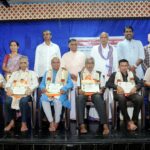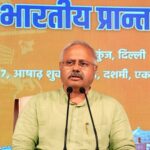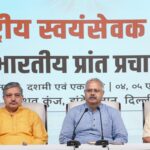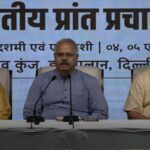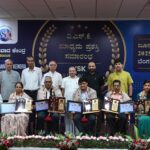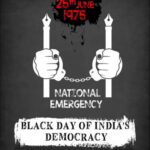
V Nagaraj
Bengaluru November 06, 2015: RSS Kshetreeya Sanghachalak V Nagaraj addressed a Press Conference in Rashtrotthana Parishat Bengaluru. The Press release by RSS during the Press Conference is given below.
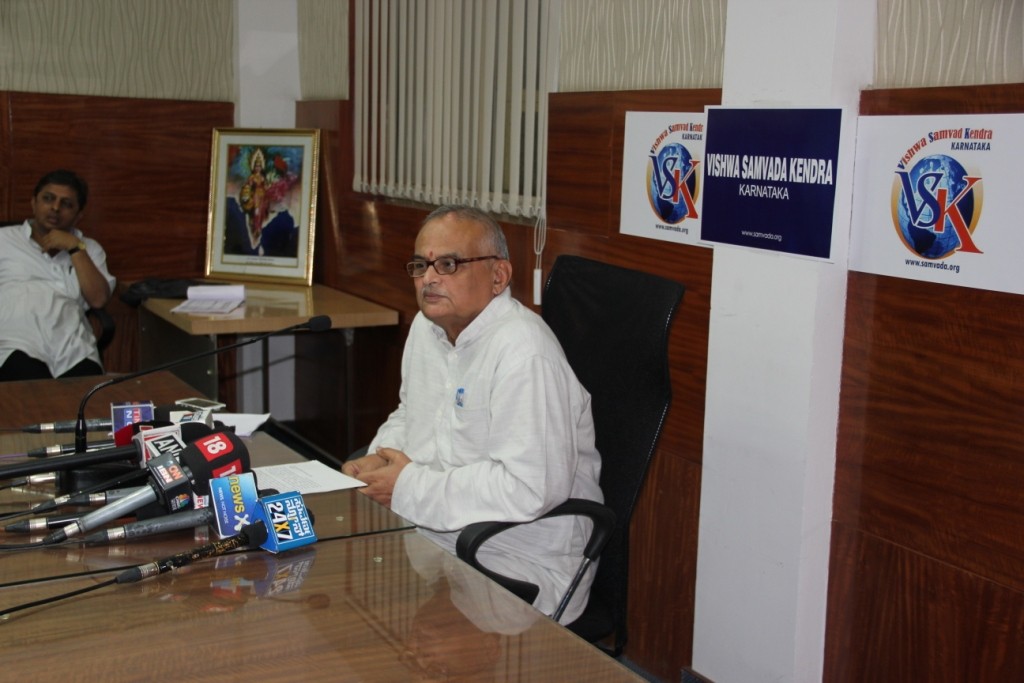
Rashtriya Swayamsevak Sangh, Karnataka
#74, Ranga Rao Road, Shankarapuram, Bengaluru 560004
***************************************
PRESS RELEASE
November 06, 2015, Bengaluru
3-day RSS national annual meet Akhil Bharatiya Karyakari Mandal Baitak (ABKM); one of the highest body for policy formulation and decision making in RSS, was held at Ranchi on October 30, 31 and November 1, 2015.
State level select office bearers of RSS, National office bearers of Sangh affiliated (Sangh Parivar) organizations attended all the three days of the meeting. The meeting deliberated on reviewing and future planning of organizational matters and activities.
Number of RSS Shakhas has been increased by 6684 and at present RSS has 50432 shakhas. There are 13,620 weekly Milans, 7940 monthly Sangh Mandalis in Bharat. There are about 1 lakh 60 thousand seva activities across Bharat. Nearly 60% of the Swayamsevaks of RSS are of the age between 18 to 40, indicating the increased participation of Youth. RSS activities have reached to all Taluks of Bharat. In next 3 years, by 2018, RSS planned to expand organizational activities to each Panchayat. Through our website, more youth are associated with RSS through ‘Join RSS’ online project. Ideological acceptance has been increased over the years.
RSS Resolution: Challenge of imbalance in the population growth rate
Steps taken to control the population of the country have yielded adequate results during the last decade. But in this regard, the Akhil Bharatiya Karyakari Mandal is of the opinion that the severe demographic changes brought forth by the analysis of the religion data of Census 2011 highlights the necessity of the review of population policy. Vast differences in growth rates of different religious groups, infiltration and conversion resulting in religious imbalance of the population-ratio, especially in border areas may emerge as a threat to the unity, integrity and cultural identity of the country.
Although Bharat was one of the early countries in the world to announce as early as in 1952 that it will have population planning measures, it was only in year 2000 that a comprehensive population policy was formulated and a population commission was formed. The policy aimed at achieving a stable but healthy population by the year 2045 by optimizing the fertility rate to the ideal figure of 2.1 total fertility rate [TFR]. It was expected that as this aim is in accordance with our national resources and expected future requirements, it will be uniformly applied to all the sections of society. However, the National Fertility and Health Survey [NFHS] of 2005-6 and the 0-6 age group population percentage data of religion in Census 2011, both indicate that the TFR and child ratio is uneven across the religions. This is reflected in the fact that the share of population of religions of Bharatiya origin which was 88 percent has come down to 83.8 percent while the Muslim population which was 9.8 percent has increased to 14.23 percent during the period 1951-2011.
In addition to that, the rate of growth of Muslim population has been very high than national average, in the border districts of border States of the country like Assam, West Bengal and Bihar, clearly indicating the unabated infiltration from Bangladesh. The Report of the Upamanyu Hazarika Commission appointed by Hon Supreme Court and several judicial pronouncements from time to time have also corroborated these facts. It is also a fact that the infiltrators are usurping the rights of citizens of these states and are becoming a heavy burden on the already scant resources apart from creating socio-cultural, political and economic tensions..
The religious imbalance of population in the North Eastern states has assumed serious proportions. In Arunachal Pradesh, the people of religions of Bharatiya origin were 99.21 percent in 1951. It came down to 81.3 percent in 2001 and to 67 percent in 2011. In just one decade the Christian population of Arunachal Pradesh has grown by almost 13 percentage points. Similarly, in the population of Manipur, this share of religions of Bharatiya origin which was more than 80 percent in 1951 has come down to 50 percent in 2011. These examples and pointers of unnatural growth of Christian population in many districts of the nation indicate an organized and targeted religious conversion activity by some vested interests.
The Akhil Bharatiya Karyakari Mandal expresses deep concern over all these severe demographic imbalances and urges the Government to
- Reformulate the National Population Policy keeping in view availability of resources in the country, future needs and the problem of demographic imbalance and apply the same uniformly to all.
- Totally curb the illegal infiltration from across the border. Prepare a National Register of Citizens and prevent these infiltrators from acquiring citizenship rights and purchasing lands.
The ABKM calls upon the countrymen including all the swayamsevaks to take the cognizance of the causes of these population changes and considering it their national duty to create public awareness and take all lawful steps to save the country from this demographic imbalance.
V Nagaraj
Kshetreeya Sanghachalak, RSS
